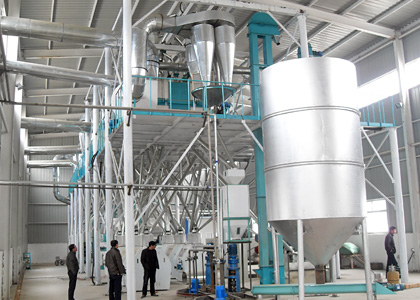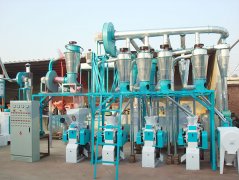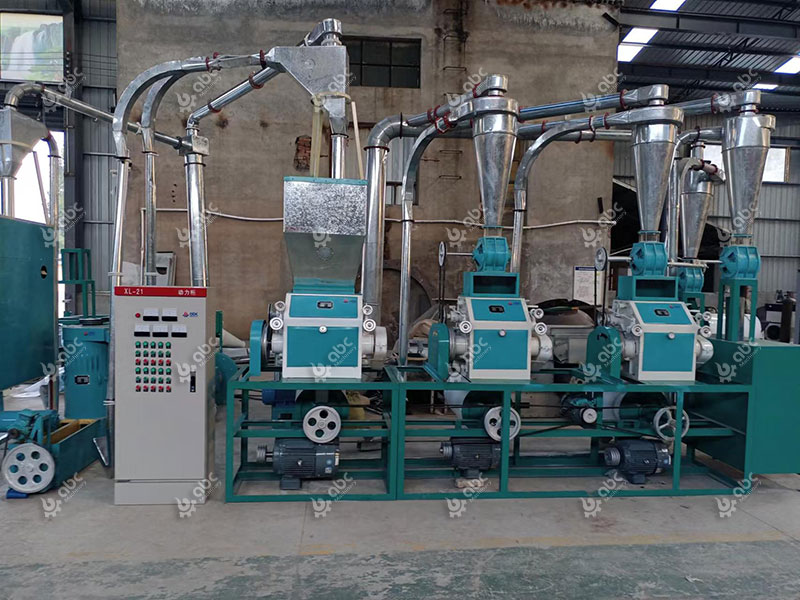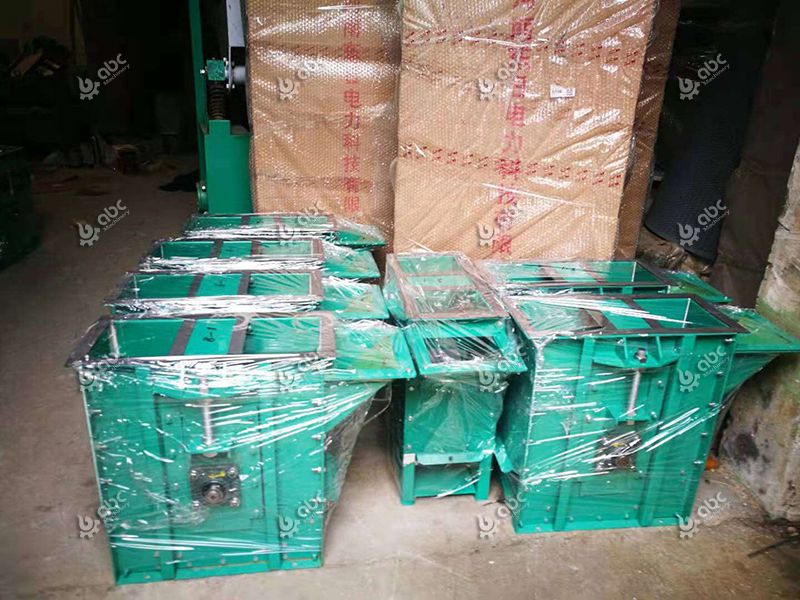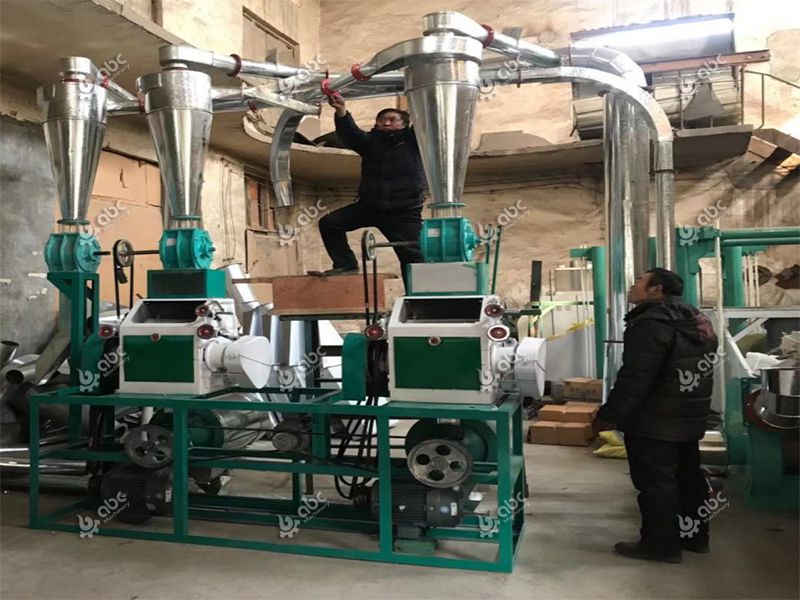Maize Milling Machinery:Daily Maintenance and Emergency Troubleshooting
Every entrepreneur in the profit-driven maize flour mill startup space knows that unexpected downtime of a maize milling machine can slash daily profits, but do you have a step-by-step plan to keep your corn grinder, maize roller mill, or portable maize milling machine running smoothly?
Whether you operate a small scale maize milling machine or a commercial corn hammer mill, proactive daily maintenance and fast emergency troubleshooting are the backbone of a sustainable business. This guide breaks down actionable strategies to minimize downtime, extend equipment life, and protect your investment in maize processing machines.
What Are the Core Daily Maintenance Tasks for Different Maize Milling Machines?
Not all maize milling equipment requires the same daily care, a small corn grinder needs different checks than a maize grits making machine, and a portable corn grinder demands extra attention for field use. Below are tailored maintenance tasks to cover every type of corn processing machine, from electric corn grinders to complete maize flour grinding machines.
Pre-Operation Checks (Non-Negotiable for All Equipment)
Before starting any maize milling machine, spend 10–15 minutes on these critical checks to avoid early-stage failures:
-
Cleanliness: Remove residual maize or flour from the feeding port, grinding chamber, and sieves of corn grinding machines. For maize meal grinding machines, pay extra attention to sieve holes to prevent blockages.
-
Lubrication: Apply food-grade lubricant to moving parts—such as the shafts of maize hammer mills and the rollers of corn roller mills. Electric maize grinding machines need lubrication for their motor bearings to reduce friction.
-
Part Integrity: Tighten loose bolts on maize mill machines (especially portable models) and inspect for cracked components (e.g., grinding blades in corn crusher machines).
-
Power Check: For electric corn grinders or portable maize milling machines, test power cords and switches to avoid short circuits.
In-Operation Monitoring (Prevent Minor Issues from Escalating)
While your maize milling machine runs, track these parameters to catch problems early:
-
Temperature: Keep an eye on the motor of electric maize grinding machines—if it overheats (above 60°C), shut down immediately to prevent burnout.
-
Noise: Unusual grinding sounds from a corn mill machine may indicate worn blades (in maize grinders) or misaligned rollers (in corn roller mills).
-
Output Quality: If a maize grits making machine produces uneven grits, or a corn flour grinding machine yields lumpy flour, stop to clean sieves or adjust grinding gaps.
Post-Operation Cleaning & Storage (Protect Equipment Overnight)
After daily use, follow these steps to maintain your maize processing equipment:
-
Full Disassembly (When Needed): For maize flour grinding machines, disassemble the grinding chamber and sieves to remove stuck maize particles—this prevents mold growth.
-
Dry Storage: Portable corn grinders used in humid regions (e.g., Uganda) should be stored in dry areas to avoid rust on metal parts.
-
Record-Keeping: Note any issues (e.g., “corn grinder machine slowed down at 2 PM”) in a log—this helps identify recurring problems over time.
How to Diagnose and Fix Common Emergency Faults in Corn Grinding Machinery?
Even with perfect daily maintenance, emergencies happen— a maize mill machine may suddenly stop, or a corn grinding mill may jam. Below is a step-by-step troubleshooting guide for the most frequent issues, plus tips to avoid costly repairs.
Emergency Fault 1: Maize Milling Machine Won’t Start
Possible Causes & Solutions:
-
Power Failure: Check if the electric corn grinder or maize milling machine is plugged in. For portable models, inspect the battery (if applicable) or power cord for damage.
-
Blocked Feeding Port: Maize mill machines often jam if too much maize is added at once. Turn off the machine, remove excess maize from the feeding port, and restart with a slower feed rate.
-
Motor Failure: If the motor of an electric maize grinding machine doesn’t hum, it may need repair or replacement. Refer to the manufacturer’s guide or contact support for replacement parts. (Related Post: Buy Maize Flour Milling Machine at Best Price)
Emergency Fault 2: Corn Grinding Machine Produces Low-Quality Output
Possible Causes & Solutions:
-
Worn Grinding Blades: Maize grinders or corn hammer mills with dull blades will produce uneven flour. Replace blades and calibrate the grinding gap.
-
Clogged Sieves: Maize grits making machines or corn flour grinding machines with blocked sieves will have low output. Remove and clean sieves, or replace them if holes are torn.
-
Misaligned Rollers: Corn roller mills need properly aligned rollers to grind maize evenly. Loosen the roller bolts, realign them, and retighten.
Emergency Fault 3: Overheating in Maize Processing Machines
Possible Causes & Solutions:
-
Lack of Lubrication: If a maize milling machine’s motor overheats, check if moving parts (e.g., roller shafts) were lubricated. Add lubricant and let the motor cool for 30 minutes before restarting.
-
Overloading: Small scale maize milling machines are not designed for continuous heavy use. Reduce the maize feed rate and give the machine 10-minute breaks every hour.
-
Dust Buildup: Corn grinding mills accumulate dust in motors, which traps heat. Turn off the machine, vacuum dust from the motor, and restart.
How to Adapt Maintenance for Regional & Equipment-Specific Needs?
Maize milling machinery operates in diverse conditions— a mini corn milling machine in Kenya faces different challenges than a large maize roller mill in South Africa. Below are key adjustments to tailor your maintenance plan, plus a comparison table for quick reference.
1. Regional Adaptations (Address Climate & Usage Habits)
-
Humid Regions (e.g., Uganda): For portable maize milling machines or electric corn grinders, add a weekly check for rust on metal parts. Use anti-rust spray on corn mill grinders and store equipment in airtight containers.
-
Dry, Dusty Regions (e.g., Kenya): Clean the air filters of maize flour grinding machines daily to prevent dust from entering the motor.
-
Field Use (Portable Models): Inspect the wheels and handles of portable corn grinders after each use— rough terrain can loosen parts. Refer to portable-specific maintenance guides from equipment suppliers for detailed tips.
2. Equipment-Specific Maintenance Table
Use this table to quickly reference key tasks for different maize processing machines:
| Equipment Type | Daily Maintenance Tasks | Weekly Maintenance Tasks | Monthly Maintenance Tasks |
|---|---|---|---|
| Maize Hammer Mill | Clean grinding blades; Check for loose fasteners | Lubricate rotating shafts; Inspect blade wear | Replace worn blades; Calibrate grinding gap |
| Corn Roller Mill | Remove residual maize from rollers; Check alignment | Clean roller bearings; Tighten drive chain | Grind roller surface; Inspect bearing condition |
| Maize Grits Making Machine | Clean sieves; Check feeding uniformity | Lubricate sieve shaking mechanism; Inspect sieve holes | Replace damaged sieves; Calibrate grit size |
| Portable Maize Milling Machine | Clean external dust; Check power cord (electric models) | Inspect wheels/handles; Tighten bolts | Test portability; Lubricate moving parts |
| Electric Corn Grinder | Test power switch; Clean grinding chamber | Lubricate motor bearings; Check cord insulation | Inspect motor performance; Replace worn brushes |
3. Cost-Saving Tips for Small Scale Operators
If you run a small maize flour processing plant (e.g., in Uganda), these tips reduce maintenance costs:
-
Buy replacement parts from trusted suppliers to avoid cheap, low-quality components that cause frequent breakdowns.
-
Train staff to perform basic maintenance— this eliminates the need for expensive external technicians.
-
Use maize cleaning equipment to remove stones or dirt before milling, which reduces wear on corn grinder machines and extends blade/roller life.
By following these daily maintenance tasks and emergency troubleshooting steps, you can cut downtime for your maize milling machinery by 50% or more—but are you ready to implement these strategies starting tomorrow? Whether you own a small corn grinder, a portable maize milling machine, or a commercial maize grits making machine, proactive care is the key to maximizing profits in your maize flour mill startup.
Don’t let equipment issues hold back your business—start your maintenance routine today!


